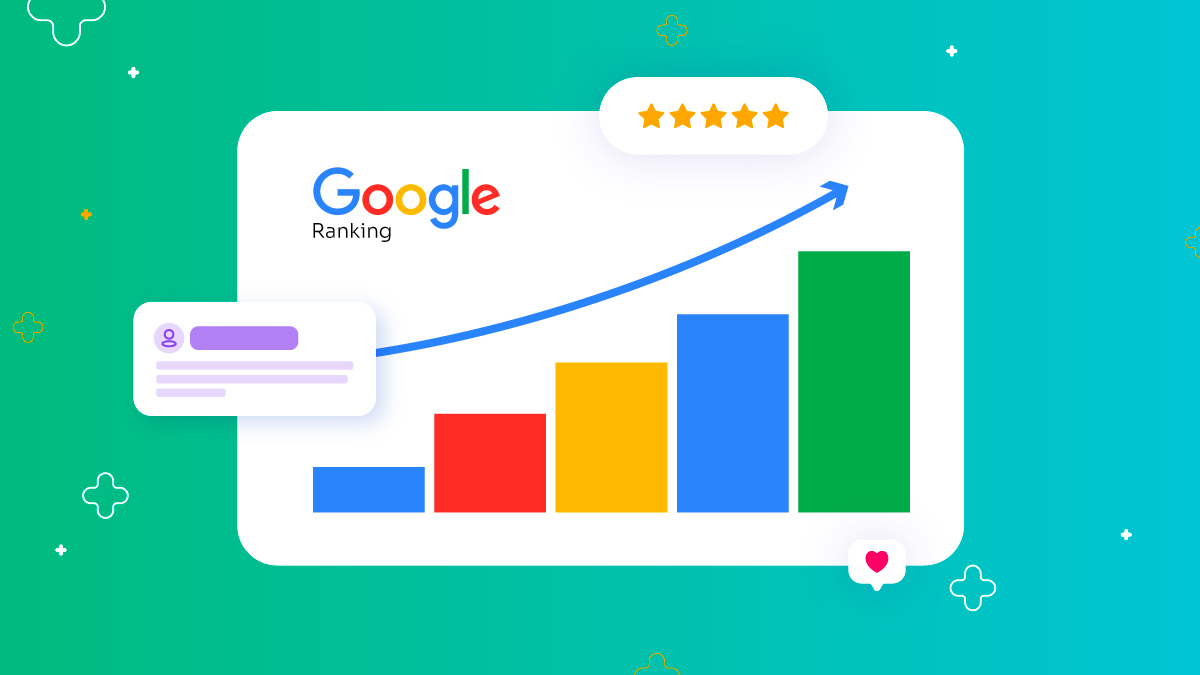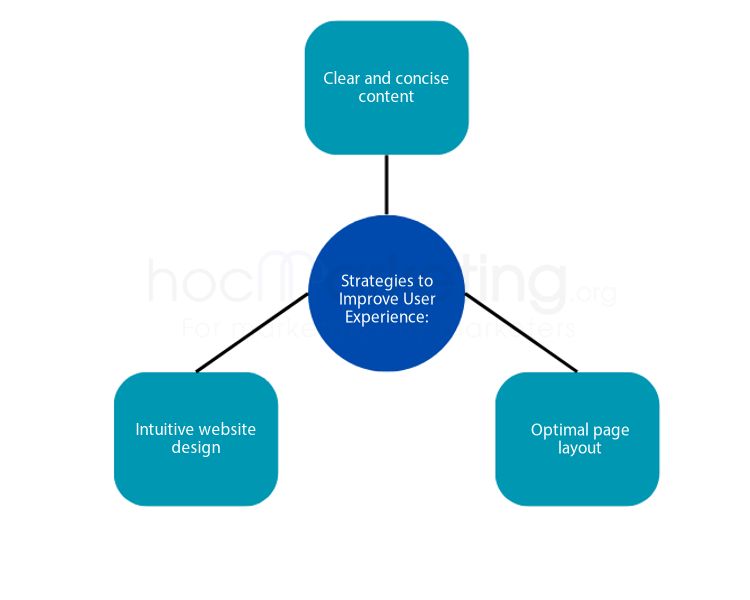
The importance of User Experience in Google Ranking Algorithm

Learn how user experience impacts Google's ranking algorithm with this informative article. Discover why bounce rates, dwell time, and click-through rates matter, and explore metrics to measure user experience like page load speed and mobile responsiveness. Gain insight into strategies to improve user experience.
User experience has become a crucial factor in website design and development in recent years. Not only does it impact the success of a website, but it also plays a significant role in Google's ranking algorithm. In this blog post, we will discuss the importance of user experience in Google's ranking algorithm and explore metrics to measure user experience. Additionally, we will provide strategies to improve user experience and prioritize it for successful SEO. Let's dive in!
1. Overview of Google Ranking Algorithm
The Google Ranking Algorithm is a highly complex system that determines the relevance and authority of a website in relation to a particular search query. This algorithm is constantly evolving and being updated to provide users with the most relevant and accurate results. The main goal of this algorithm is to provide users with the best possible experience by delivering high-quality, useful, and trustworthy content. In order to achieve this, Google takes a number of different factors into account, including the user experience of a website. In this article, we will explore the importance of user experience in the Google Ranking Algorithm and discuss strategies for improving it.
2. What is User Experience?
User experience (UX) refers to the overall satisfaction and enjoyment users feel when interacting with a website or application. It encompasses everything from the ease of navigation to the visual appeal of a site, and even the speed at which pages load. A positive user experience is crucial for websites and applications to succeed, as it directly impacts the amount of time users spend on a site, their likelihood to return, and their propensity to engage with the content. In the context of search engine optimization (SEO), user experience has become an increasingly important factor in determining a site's ranking on Google's search results pages. This section will explore what user experience means in the context of Google's ranking algorithm and why it is so critical for businesses to prioritize UX in their SEO strategies.
3. Importance of User Experience in Google Ranking Algorithm
User experience is a crucial factor that significantly impacts the Google ranking algorithm. Google's ultimate goal is to provide users with the best possible search experience. Therefore, it makes perfect sense that websites offering a superior user experience are given priority in the Google search results. A positive user experience ensures that visitors to a website stay longer, engage more, and ultimately convert. In contrast, a poor user experience results in high bounce rates, low dwell times, and fewer conversions.
One of the critical factors that Google considers while ranking websites is the bounce rate. Bounce rate refers to the percentage of visitors who leave a website immediately after visiting a single page. Websites with high bounce rates are considered to offer a poor user experience and are consequently downgraded in the search rankings. The lower the bounce rate, the better the user experience, and the higher the chances of ranking well on Google.
Dwell time is another significant factor that Google considers while ranking websites. It refers to the amount of time a visitor spends on a website after clicking on a search result. A high dwell time indicates that a website is offering valuable and relevant information to the visitors, resulting in a positive user experience. Therefore, websites with higher dwell times rank higher in the Google search results.
Click-through rates also play a vital role in the Google ranking algorithm. A website with a higher click-through rate indicates that users find the website's content and presentation compelling and engaging. Google uses click-through rates as an indication of user satisfaction, promoting websites with higher click-through rates to the top of the search results.
In conclusion, user experience is a crucial determinant of a website's ranking on Google. Websites that provide a positive user experience by engaging users with valuable content, intuitive design, and fast load times are rewarded with higher rankings on Google. Therefore, it is imperative for website owners and marketers to prioritize user experience to achieve successful SEO and improve their website's ranking on Google.
Impact on bounce rates
User Experience (UX) is a crucial factor in determining a website's ranking on Google. One of the ways in which UX affects ranking is through its impact on bounce rates. Bounce rates refer to the percentage of users who leave a website after viewing only one page, indicating that they did not find what they were looking for or were dissatisfied with the experience. High bounce rates are a negative signal to search engines, indicating that the website may not be providing the information or experience that users are looking for.
When a website has a high bounce rate, it suggests to Google that the website is not relevant or useful to users, and thus, it may not deserve a high ranking. In contrast, a website with low bounce rates indicates that users are finding what they are looking for, which signals to Google that the website is providing a positive user experience. Therefore, improving UX can help to lower bounce rates and improve a website's ranking on Google.
To improve UX and decrease bounce rates, website owners should focus on creating engaging and relevant content that meets users' needs. This can be achieved by ensuring that the website's content is easy to read, well-organized, and provides value to the user. Additionally, website owners should work to create a user-friendly design and layout that is visually appealing and easy to navigate. By prioritizing UX, website owners can improve bounce rates, increase user engagement, and ultimately, improve their website's ranking on Google.
Influence on dwell time
User experience has a significant influence on the dwell time of a website. Dwell time refers to the amount of time a user spends on a website after clicking on a link from the search engine results page (SERP). Google considers dwell time as an important factor in their ranking algorithm because it indicates the relevance and usefulness of a website to the user's search query. If a user clicks on a website but immediately bounces back to the SERP, it sends a signal to Google that the website did not meet the user's expectations.
A website with good user experience is more likely to have a higher dwell time because it provides the user with valuable information and a pleasant browsing experience. For instance, if a website loads quickly, has a clear and concise layout, and is easy to navigate, the user is more likely to stay on the website longer. On the other hand, if a website takes too long to load, has cluttered and confusing design, or lacks relevant information, the user is more likely to leave the website quickly.
Therefore, it is crucial for website owners to prioritize user experience to increase dwell time and improve their website's ranking on Google. By providing users with the information they need and creating a positive browsing experience, website owners can increase the likelihood of users staying on their website and engaging with their content. The next section will discuss the metrics website owners can use to measure user experience and strategies to improve it.
Effect on click-through rates
User experience also has a significant impact on click-through rates, which refers to the number of times users click on a search result and visit a website. When a website offers a positive user experience, users are more likely to click on the link and visit the site. Google considers click-through rates as a factor in determining the relevance and usefulness of a website for a particular search query. Websites with high click-through rates indicate that users found the content useful and relevant to their search query. On the other hand, low click-through rates suggest that the website's content and relevance are questionable, and Google may reduce its visibility in search results. Therefore, improving user experience can lead to higher click-through rates, which ultimately helps in improving a website's search engine ranking.
4. Metrics to Measure User Experience
To effectively measure user experience, certain metrics need to be taken into consideration. One of the most important metrics is page load speed. Slow loading pages can lead to higher bounce rates and lower user engagement, negatively impacting user experience. Therefore, website owners must ensure that their pages load quickly to provide a seamless experience for their users.
Another essential metric is mobile responsiveness. With the increasing use of mobile devices, it is crucial that websites are optimized for mobile users. A website that is not mobile-friendly can result in a frustrating user experience, leading to high bounce rates and low dwell time.
User engagement is also a critical metric to measure user experience. The level of user engagement on a website can indicate how well the website is meeting the needs of its users. By tracking user engagement metrics such as time on page, click-through rates, and social shares, website owners can gain insight into how their users are interacting with their website and make necessary improvements to enhance user experience.
Overall, by focusing on metrics such as page load speed, mobile responsiveness, and user engagement, website owners can effectively measure user experience and make necessary improvements to their website.
Page load speed
Page load speed is an essential metric to consider when it comes to user experience. It refers to the amount of time it takes for a webpage to load completely. Slow page load speed can be frustrating for users and is known to increase bounce rates. In fact, research has shown that 53% of mobile users will abandon a website if it takes more than three seconds to load.
Google recognizes the importance of page load speed and has incorporated it into its ranking algorithm. The search engine giant has stated that faster-loading websites are likely to rank higher in search results. This means that website owners need to prioritize optimizing their page load speed if they want to increase their chances of ranking well on Google.
There are several factors that can affect page load speed, including server response time, image size, and JavaScript and CSS files. To improve page load speed, website owners can implement techniques such as compressing files, optimizing images, and minifying code. Additionally, website owners can use tools such as Google's PageSpeed Insights to measure their page load speed and identify areas for improvement.
In summary, page load speed is a critical factor in user experience and Google's ranking algorithm. Website owners should prioritize optimizing their page load speed to ensure that users have a positive experience and to increase their chances of ranking well in search results.
Mobile responsiveness
Mobile responsiveness is a crucial aspect of user experience that directly impacts Google's ranking algorithm. With the increasing use of mobile devices for browsing the internet, websites that are not mobile-friendly can result in a frustrating user experience. This can lead to high bounce rates and reduced user engagement, both of which can negatively impact a website's search engine ranking. Mobile responsiveness refers to a website's ability to adapt to different screen sizes and resolutions, ensuring that users can access and navigate the site seamlessly on any device. In the next section, we will explore the importance of mobile responsiveness in greater detail and discuss strategies for optimizing this aspect of user experience.
User engagement
User engagement is a crucial factor in determining the success of a website. It refers to how users interact with a website, such as commenting on blog posts, sharing content on social media, or subscribing to newsletters. User engagement is an essential metric to measure the effectiveness of a website in providing a positive user experience. It is also a critical factor in determining the ranking of a website in Google's search results.
One of the essential aspects of user engagement is the quality of the content provided on a website. High-quality content that is relevant, informative, and engaging can keep users on a website for longer periods. This, in turn, can increase the dwell time, reduce the bounce rate, and improve the click-through rate. Additionally, high-quality content can encourage users to interact with a website by commenting, sharing, or bookmarking the content.
Another important aspect of user engagement is the level of interactivity provided by a website. Interactive features such as quizzes, polls, and surveys can increase user engagement by encouraging users to participate actively in a website's content. Additionally, features such as live chat, forums, and feedback forms can provide users with a platform to interact with a website's owners and other users, creating a sense of community and fostering user loyalty.
Social media integration is another crucial factor in user engagement. By incorporating social media buttons on a website's pages, users can easily share content with their followers, increasing the reach of a website's content. Additionally, social media integration can provide users with an opportunity to follow a website's social media accounts, creating a direct line of communication between a website's owners and its users.
In conclusion, user engagement is a vital metric that can significantly impact a website's ranking in Google's search results. By providing high-quality content, interactive features, and social media integration, website owners can improve user engagement, reduce bounce rates, increase dwell time, and improve click-through rates. Ultimately, prioritizing user engagement is essential for creating a positive user experience and achieving successful SEO.
5. Strategies to Improve User Experience
To improve user experience, it is crucial to focus on clear and concise content, intuitive website design, and optimal page layout and structure. First and foremost, content must be well-written and presented in a way that is easy for users to understand. This can be achieved by using simple language, avoiding jargon, and breaking up text with headings, subheadings, and bullet points. Furthermore, it is important to ensure that the website design is intuitive, with easy-to-use navigation and clear calls-to-action.
In addition to content and design, optimizing page layout and structure is also essential for improving user experience. This includes ensuring that pages load quickly, are mobile-friendly, and engage users through interactive elements such as videos or infographics. By prioritizing user experience in these ways, website owners can improve their SEO rankings and attract more traffic to their site.
Clear and concise content
Clear and concise content is a crucial element of user experience that impacts website visitors' engagement and satisfaction. When users visit a website, they have a specific goal in mind, and if they cannot find the information they are looking for quickly, they are likely to leave. Therefore, providing visitors with accurate and relevant information in a clear and concise manner is essential to keep them engaged and increase the chances of conversion.
One effective way to create clear and concise content is to use short and straightforward sentences that are easy to read and understand. Avoid using technical jargon or complex vocabulary that may confuse or alienate some visitors. Using subheadings, bullet points, and numbered lists can also help break down the information into smaller, more manageable sections and make it easier for visitors to scan and find what they need.
Another crucial element of creating clear and concise content is ensuring that it is relevant to the target audience. By understanding the visitors' needs and preferences, website owners can tailor their content to meet those needs and provide information that is both informative and interesting. Conducting user research and analyzing website analytics can help identify the visitors' interests and pain points, which can be used to create content that resonates with them.
In summary, clear and concise content is an essential component of user experience that can significantly impact website engagement and conversion rates. By using simple language, breaking down information into smaller sections, and tailoring content to visitors' needs, website owners can create a positive user experience that keeps visitors engaged and satisfied.
Intuitive website design
An intuitive website design is crucial in providing a positive user experience. Users should be able to navigate through the website effortlessly and find the information they need without any confusion. A cluttered and confusing website layout can result in a negative user experience, leading to a higher bounce rate and lower dwell time. It is important to create a website design that is visually appealing, easy to navigate, and user-friendly. This can be achieved through the use of clear and concise menus, a consistent layout throughout the website, and the use of visual cues to guide users through the website. Additionally, it is important to ensure that the website design is optimized for various devices, including desktops, laptops, tablets, and mobile phones. A responsive website design ensures that users have a seamless experience regardless of the device they are using.
Optimal page layout and structure Prioritizing User Experience for Successful SEO
Optimal page layout and structure plays a critical role in enhancing the user experience of a website. A well-organized and structured website can guide users to relevant information and ensure they can quickly find what they are looking for. This, in turn, can improve user engagement, reduce bounce rates, and increase dwell time, all of which are crucial factors in Google's ranking algorithm. In this section, we will explore some of the key elements of a website's page layout and structure that can contribute to an improved user experience and better SEO performance.
One of the most important aspects of optimal page layout and structure is intuitive navigation. Users should be able to easily navigate a website and find what they are looking for without feeling overwhelmed or confused. This can be achieved by organizing content into clear categories and using a consistent menu structure throughout the website. Additionally, providing users with a search bar can further enhance their ability to find specific information quickly.
Another critical element of optimal page layout and structure is the use of whitespace. Whitespace, or the empty space between website elements, can help to improve readability, prioritize content, and create a more visually appealing design. By strategically using whitespace to separate different sections of a website, designers can create a more organized and easy-to-follow layout.
Finally, designing a website with a responsive layout is essential for providing users with a seamless experience across different devices. With an increasing number of users accessing websites on mobile devices, ensuring that a website is optimized for mobile viewing can significantly improve user engagement and reduce bounce rates. Responsive design can also contribute to better SEO performance, as Google now considers mobile-friendliness as a ranking factor in its algorithm.
In conclusion, prioritizing optimal page layout and structure is crucial for enhancing the user experience of a website and improving its SEO performance. By incorporating intuitive navigation, whitespace, and responsive design, designers can create a website that is easy to use, visually appealing, and accessible across different devices.
Summary
In conclusion, user experience is a crucial factor in Google's ranking algorithm. The search engine giant prioritizes websites that provide a seamless and engaging experience to their visitors. By focusing on elements such as page loading speed, mobile-friendliness, and content relevancy, website owners can improve their ranking on the search engine results page. Ultimately, the goal is to create a website that not only satisfies the user's needs but also aligns with Google's standards. By doing so, businesses can attract more traffic, increase engagement, and ultimately drive conversions. As a result, optimizing user experience should be a top priority for all website owners looking to improve their online visibility and grow their business.















